Doctor Who (Classic): “The War Machines”
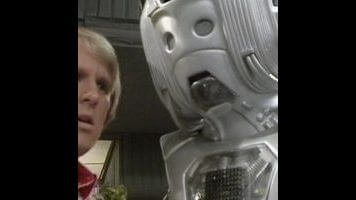
“The War Machines” (season 3, episodes 42-45. Originally aired June 25-July 16, 1966)
“The War Machines” closed out Doctor Who’s third season in 1966, but like “The Time Meddler” the year before, it doesn’t quite have the feel of a modern season finale—it doesn’t feel like the endpoint of some larger storyline in the series, though it does see an important cast change as the Doctor’s companion Dodo leaves in favor of newcomers Ben and Polly. But especially in hindsight, “The War Machines” did help set the stage for the truly seismic changes that were looming just over the horizon for Doctor Who. Two serials later, in “The Tenth Planet,” the series would undergo the single most important cast change in its history, when William Hartnell collapsed on the floor of the TARDIS and got up as Patrick Troughton—the first regeneration. It wasn’t just the lead actor that would change, but the style of the show itself—and while “The War Machines” didn’t anticipate the regeneration itself (I’m not sure if that idea had even been thought of yet), it did mark a bold step toward the kind of action-driven thrillers that would be the hallmark of the Second Doctor era.
In terms of the plot itself, “War Machines” is pretty good if not a classic, with an appealing B-movie sensibility—this feels like a better, if equally cheaply made, version of the kind of movie featured on Mystery Science Theater 3000. (The War Machines themselves strike me as oversized versions of the homemade battletanks you see on Robot Wars, but like so many things with this series, you have to be willing to take the idea behind the actual effect seriously if you're going to be able to enjoy Doctor Who the way it ought to be enjoyed.) The Doctor lands in London with his current companion, Dodo, and is immediately swept up in an attempted takeover of the world by WOTAN, a highly advanced computer that (like Skynet in The Terminator) has achieved sentience and thinks it can do better than the imperfect humans who created it. Using mind control, WOTAN assembles an army of humans to do its bidding, and eventually builds a fleet of self-propelled robot tanks—one of which is captured and reprogrammed by the Doctor, who sends it home to kill its papa. Along the way, Dodo befriends Polly, the assistant to the scientist who built WOTAN, and later Ben, a lonely and disconsolate sailor who’s at loose ends due to six months’ shore leave and doesn’t know what to do with himself. Both Dodo and Polly are snared in WOTAN's web. After the Doctor snaps her out of her WOTAN-induced brainwashing, Dodo winds up disappearing almost entirely from the story in favor of her replacements, in what might be the cruelest ditching of a companion in the entire series. More on that in a moment.
One thing that might not be apparent to us seeing this in 2012 is that there’s a conscious attempt to make this story feel like it’s happening not on some faraway planet in the year 5000, but in the immediate present and right here at home. Except for a smallish scene in season two’s “The Chase,” “The War Machines” was the first time Doctor Who had come back to present-day Earth since the series’ debut. This was a purposeful move away from the historical stories and fanciful sci-fi that had dominated earlier—here, a big part of the thrill for viewers in 1966 would have been the notion that WOTAN and its War Machines were just a hair’s breadth away from being real, rampaging through their very own neighborhoods, next to familiar London landmarks like Covent Garden, Battersea Power Station, and, most importantly, the then-new Post Office Tower. Now known as the BT Tower, it was the tallest building in the United Kingdom at the time and, as the main telecommunications center in the country, was a living symbol of unnervingly pervasive high-tech. It’s the perfect lair for some Colossus-like computer like WOTAN, which actually wasn’t at all accidental—script editor Gerry Davis came up with using the tower as a main location for the story before anything else was in place, and writers Kit Pedler and Ian Stuart Black wound up inventing WOTAN to suit the tower’s particular qualities. The web came first, not the spider.
The move toward more action-oriented stories was probably inevitable, since they were clearly more popular than the historicals, but it also meant that the series was losing some of its creative spark in favor of a more formulaic approach. Action also wasn’t a great fit for the elderly Hartnell, whose health problems would force him to retire later that year. His increasing inability to remember his lines is all too apparent in the first scene, when he needs to express a feeling of psychic unease about the still-unknown menace in the Post Office Tower and nearly babbles it into incoherence. And his physical frailty also meant that Ben was pressed into service doing almost all of the running around and interaction with other characters that the Doctor might otherwise have done—which was not entirely bad, since that also allowed more time for the relationship between Ben and Polly to develop. Other than discussing strategy with the pompous civil servant Sir Charles, the Doctor doesn’t step up and take decisive action until the very end of “The War Machines,” when his scheme to capture War Machine No. 9 is carried out and quickly leads to WOTAN’s final defeat. But Hartnell also gets a terrific moment in the cliffhanger to episode three, standing his ground resolutely against the approach of War Machine No. 3 while behind him all the soldiers flee in panic, winding it up with a typically arrogant, defiant Hartnellian thrust of his chin. Usually the cliffhangers are all about highlighting how much danger the characters are in, but this one flips that notion on its head—we should be worried about the Doctor, because he’s facing down a tank that’s just mowed down a whole bunch of army dudes with guns (and, um, set some crates on fire with its deadly fire-extinguisher gun arm). But instead, his utter confidence is magnetic. How will he survive? The hell if I know. But the look in his eye tells me that he does, and finding out what he’s thinking is why I wanted to stick around for episode four.
It’s a far, far better moment than any that poor old Dodo gets. I can’t say that I warmed to her character at all, but the manner in which she was written out of the series is breathtakingly brusque, and mirrors the way actress Jackie Lane was fired behind the scenes. I haven’t seen any of the previous Dodo serials—though both “The Ark” and “The Gunfighters” are on the shortlist for future reviews—but based on what we see of her here, it seems like a no-brainer to get rid of her character in favor of the far more lively and charming Ben and Polly. Then again, this is also a terrible showcase for Dodo—she gets maybe five minutes of screentime as the Doctor’s full-fledged sidekick before becoming the square third-wheel to Polly at Club Inferno, and eventually a mind-controlled stooge for WOTAN. Then the Doctor rescues her from WOTAN, and boom!—she’s gone, off for a 48-hour sleep that removes her from the rest of the plotline—and Doctor Who entirely.
That’s the part that stands out as needlessly peremptory: Not only is Dodo robbed of a farewell scene, but the Doctor actually calls her “ungrateful” when he’s told she’s not returning—which isn’t necessarily fair, because we never get to hear Dodo’s side of the story for why she stays behind—and worse, the real reason she left was that the producers thought Lane looked too dowdy and old, and, according to Davis, “we thought the audience would identity better with this leggy swinging Sixties girl.” Even if you prefer Polly to Dodo, you have to admit that’s cold. At least when Adric was killed in “Earthshock,” the audience was asked to care about it. There’s an interesting storyline here that maybe Dodo truly is unworthy of being part of the TARDIS crew, that her capture by WOTAN somehow counts as a true betrayal of the Doctor, but there’s not enough of her in the story to make that work—it’s left tantalizingly unexplored, and Dodo is not merely cast aside but condemned the way old Soviet leaders were posthumously torn down to pave the way for the new order.


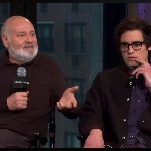
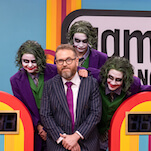
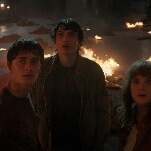


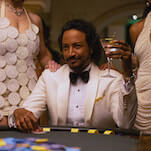

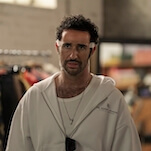
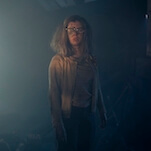


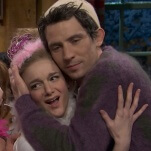









![HBO teases new Euphoria, Larry David, and much more in 2026 sizzle reel [Updated]](https://img.pastemagazine.com/wp-content/avuploads/2025/12/12100344/MixCollage-12-Dec-2025-09-56-AM-9137.jpg)
















